Spotting exposed cords on your tires is never good news. When the internal structure of your tire becomes visible through the tread or sidewall, you’re facing a serious safety hazard that demands immediate attention. Many drivers wonder exactly how much time they have before complete tire failure occurs.
We’ve investigated this critical safety issue and found the answer is quite simple: tires with exposed cords should not be driven on at all. Once those steel or fabric reinforcements become visible, your tire has already lost its structural integrity and could fail catastrophically at any moment. Continuing to drive isn’t just risky—it’s potentially life-threatening for you and others on the road.
Understanding Tire Cord Exposure: What It Means for Your Safety
Tire cord exposure represents a critical safety issue that requires immediate attention. These exposed cords are the internal structural components of your tire that become visible when the rubber tread has worn down excessively or been damaged. The cords serve as the skeleton of your tire, providing strength and maintaining its shape under pressure.
When tire cords become exposed, your vehicle’s safety is severely compromised in multiple ways. First, the structural integrity of the tire is significantly reduced, making it prone to sudden blowouts. Second, exposed cords quickly deteriorate when in contact with road surfaces, moisture, and debris. Third, the weakened tire structure can lead to unpredictable handling, especially during emergency maneuvers or adverse weather conditions.
Driving on tires with exposed cords creates substantial risks including:
- Complete tire failure during operation
- Loss of vehicle control while driving
- Increased stopping distances due to reduced traction
- Potential damage to other vehicle components
- Higher risk of hydroplaning in wet conditions
According to the National Highway Traffic Safety Administration (NHTSA), tire failures contribute to approximately 11,000 crashes annually in the United States. Many of these incidents involve tires with compromised structural integrity, including those with exposed cords.
The legal implications of driving with exposed tire cords are serious as well. Many jurisdictions consider operating a vehicle with severely damaged tires a traffic violation. In some states, you may face fines ranging from $100 to $300 for driving with unsafe tires, and insurance companies might deny claims for accidents caused by negligent tire maintenance.
Exposed tire cords aren’t just a mechanical issue—they’re a clear warning sign that your safety on the road is at immediate risk. The tire has essentially failed and requires replacement without delay.
The Dangers of Driving on Tires with Exposed Cords
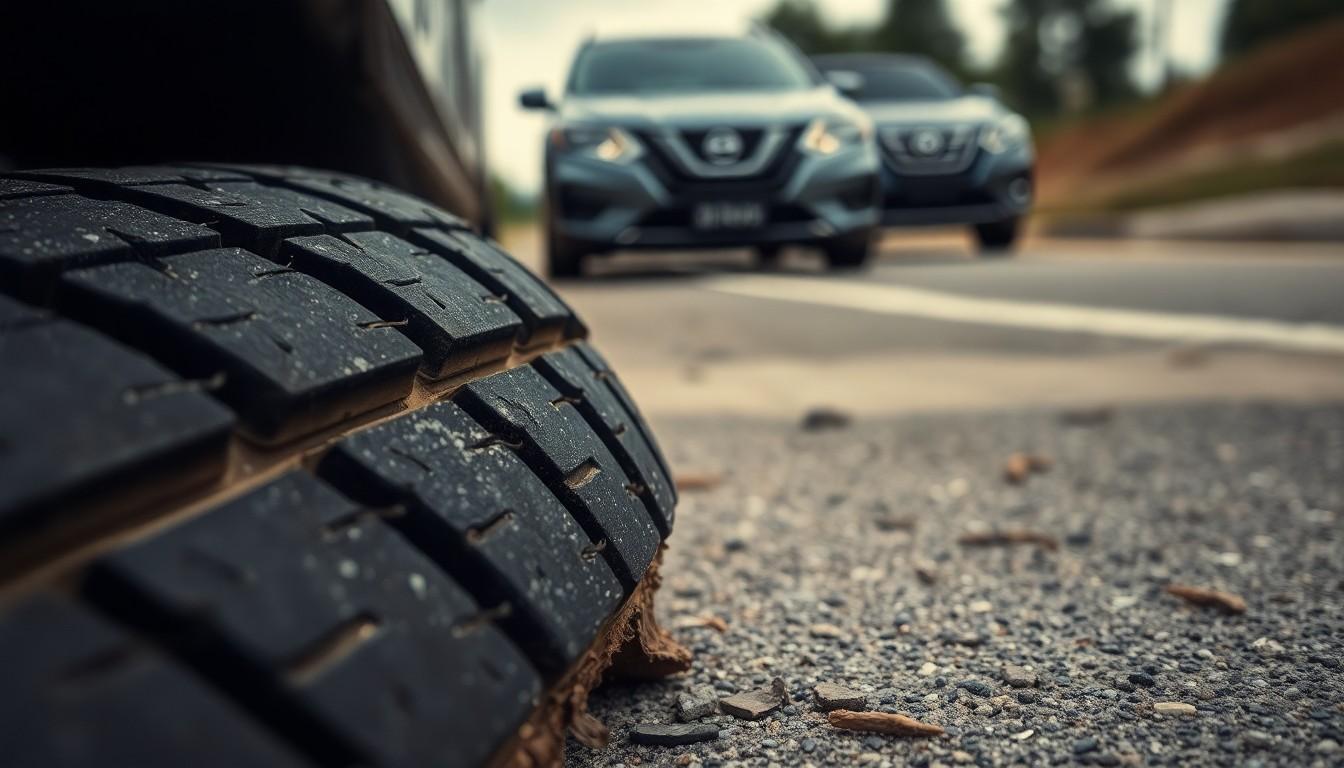
Driving on tires with exposed cords creates immediate safety hazards that put you and other road users at serious risk. Exposed tire cords indicate a complete failure of the tire’s structural integrity, making continued use extremely dangerous regardless of the distance traveled.
How Tire Cords Become Exposed
Tire cords become exposed through several common circumstances that compromise tire integrity. Natural wear and tear gradually erodes the rubber tread until the metal cords underneath become visible, especially when tires aren’t replaced at appropriate intervals. Physical damage from road hazards such as potholes, curbs, or sharp objects often causes sudden cord exposure by cutting through the protective rubber layers. Vehicle suspension issues including worn-out tie rod ends, ball joints, and wheel bearings create abnormal tire wear patterns that prematurely expose cords in exact areas. Improper tire maintenance practices like running with incorrect inflation pressures accelerates uneven tread wear, leading to exposed cords particularly on the edges or center of the tire tread.
Potential Risks and Hazards
Exposed tire cords dramatically increase the risk of catastrophic blowouts, particularly on wet roads or during high temperature conditions when the tire structure is further compromised. Tires with exposed cords experience significantly reduced puncture resistance, making them vulnerable to additional damage from even minor road debris that intact tires would typically withstand. Hydroplaning becomes much more likely as the diminished tread depth and compromised structure can’t effectively channel water away from the contact patch. Heat accumulates faster in worn tires with exposed cords, creating a dangerous cycle where the weakened structure generates more heat, further accelerating the breakdown process. Legal consequences include potential traffic citations, as driving with exposed cords is illegal in most jurisdictions, plus increased liability for accidents caused by tire failure. Insurance companies may deny claims for accidents determined to be caused by negligently maintained tires with visible cord exposure, leaving drivers financially responsible for damages.
How Long Can You Drive on Tires with Exposed Cords?

Driving on tires with exposed cords is extremely dangerous and puts you at immediate risk of tire failure. The moment you notice cord exposure, your tire has already reached the end of its usable life and requires replacement without delay.
The Immediate Timeframe: Hours Not Days
Tires with visible cords or metal belts don’t have days or weeks of life remaining—they have hours at most. Expert analysis confirms that once a tire’s internal structure becomes visible, it’s no longer structurally sound and has either sustained important damage or completely worn beyond its expected lifespan. Continuing to drive on such tires dramatically increases your risk of experiencing a sudden blowout or catastrophic failure, particularly at highway speeds or during adverse weather conditions.
Factors That Impact Remaining Lifespan
Several critical factors influence how quickly a tire with exposed cords might fail completely. Safety risks multiply exponentially as cord exposure increases, with wet roads amplifying the danger through reduced traction and increased hydroplaning potential. Legal consequences also come into play, as driving on tires with visible cords violates minimum tread depth requirements in many states, potentially resulting in traffic citations and liability issues if an accident occurs.
Vehicle conditions further compound the problem, as exposed cords often indicate underlying suspension problems like worn tie rod ends, ball joints, or wheel bearings. These mechanical issues accelerate tire wear and make failure even more imminent. Even though some online forums suggesting short-distance driving (around 40 miles) might be possible on compromised tires, automotive safety experts universally advise against this practice due to the unpredictable nature of tire failure.
Legal Implications and Insurance Considerations
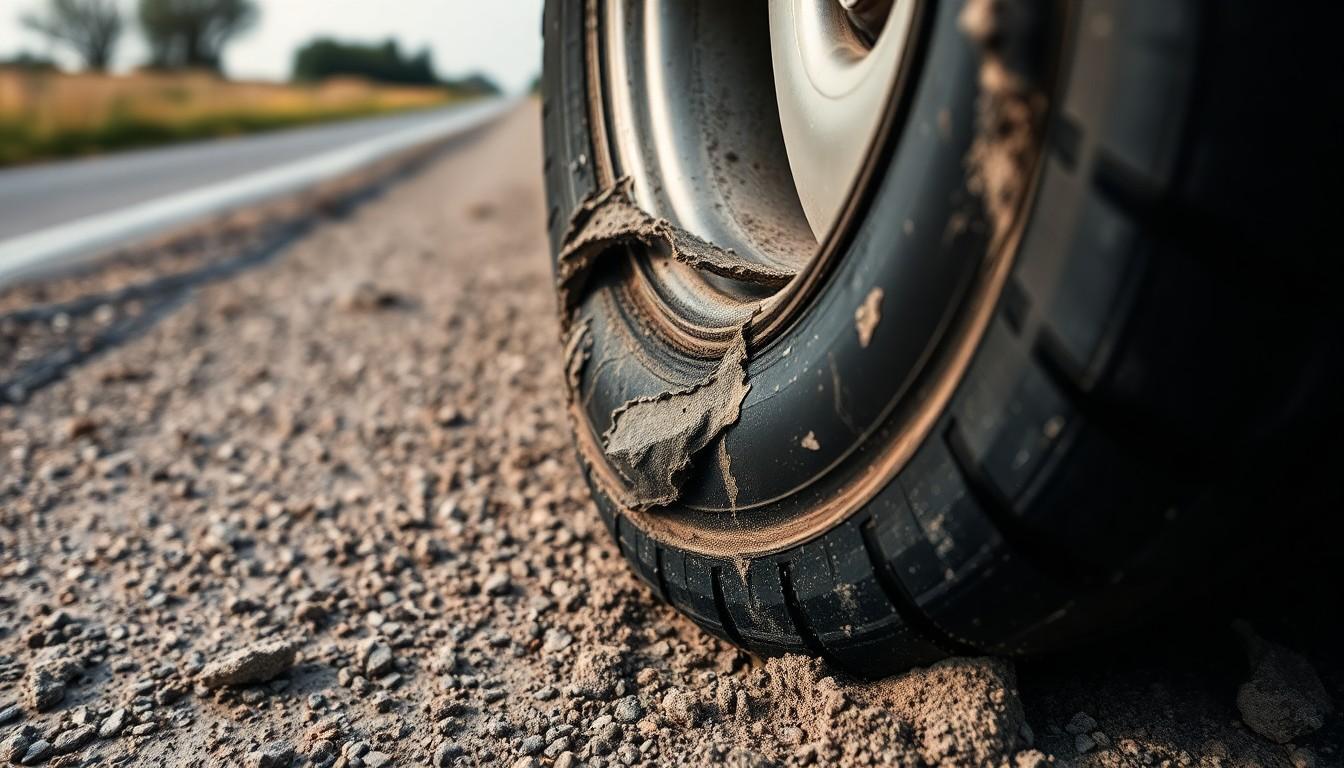
Driving with tires that have exposed cords isn’t just dangerous—it’s legally problematic. Many jurisdictions explicitly prohibit the use of tires with compromised structural integrity, including those with visible cords. Violating these regulations can result in important fines and penalties under Department of Transportation (DOT) tire safety standards. Traffic officers routinely issue citations for vehicles operating with unsafe tires, treating this as a serious moving violation.
Insurance companies take a firm stance on vehicles with unsafe tires. When an accident occurs while driving on tires with exposed cords, insurers often deny claims or substantially reduce payouts. Most insurance policies contain clauses requiring vehicles to be maintained in a roadworthy condition. Operating a vehicle with severely worn tires constitutes negligence from an insurance perspective, potentially voiding coverage entirely when tire failure contributes to an accident.
The financial consequences extend beyond immediate fines. If your exposed cord tires cause an accident resulting in property damage or injuries to others, you’re likely to face increased liability. Courts typically view driving on visibly damaged tires as a form of negligence, making drivers fully responsible for resulting damages. This negligence determination can lead to personal financial liability that far exceeds normal insurance coverage limits.
Remember that no temporary fix exists for tires with exposed cords—replacement is the only option. Unlike minor tire damage that might be repairable, once cords become visible, the tire has reached a point of critical structural failure. Professional tire technicians universally refuse to repair such tires due to safety standards and liability concerns. The expense of immediate tire replacement is minimal compared to the potential legal and financial consequences of continuing to drive on failed tires.
Signs That Indicate Your Tire Cords Are Exposed
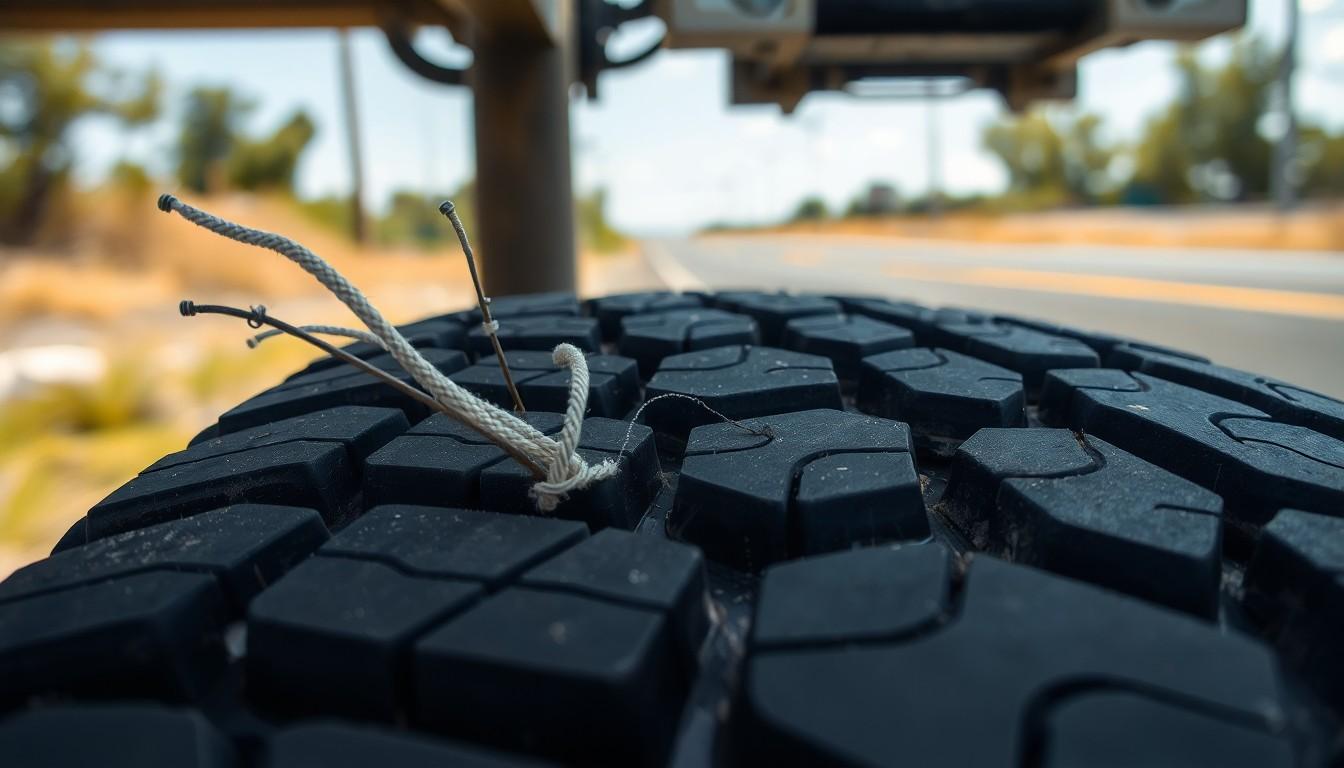
Identifying exposed tire cords early can prevent dangerous situations on the road. Visible cords are the most obvious indicator—when you can see fabric or metallic strands poking through the tread or sidewall, your tire’s outer layers have worn down critically, exposing the internal structure. Reduced tread depth accompanies cord exposure, often falling below the legal minimum required in many states, which significantly compromises traction and stability during driving.
Visual Indicators
Exposed cords appear as strands or threads visible through the rubber of your tire. These metallic or fabric components, normally hidden within the tire structure, become apparent when the surrounding rubber wears away excessively. Tires in this condition often show multiple areas where the internal reinforcement materials protrude through the surface, especially along the tread area or sidewalls where damage commonly occurs.
Physical Changes
Cracks and brittle rubber often develop alongside cord exposure, indicating advanced deterioration of the tire material. Heat accumulation increases dramatically in tires with less tread, particularly during summer months or in hot climates, which further weakens the tire’s structure and accelerates failure. Severely worn tires with exposed cords may also display irregular wear patterns, bulges, or deformations that signal structural compromise throughout the tire body.
Performance Issues
Tires revealing their internal cords typically exhibit noticeable performance problems while driving. Vibrations felt through the steering wheel often intensify as cords become exposed, making handling less predictable and potentially dangerous. Reduced grip on wet surfaces becomes evident as the tire loses its ability to channel water effectively, increasing hydroplaning risk substantially. Longer stopping distances result from the compromised traction of a tire with exposed reinforcement materials, creating hazardous conditions during emergency braking situations.
Proper Actions to Take When You Notice Exposed Tire Cords
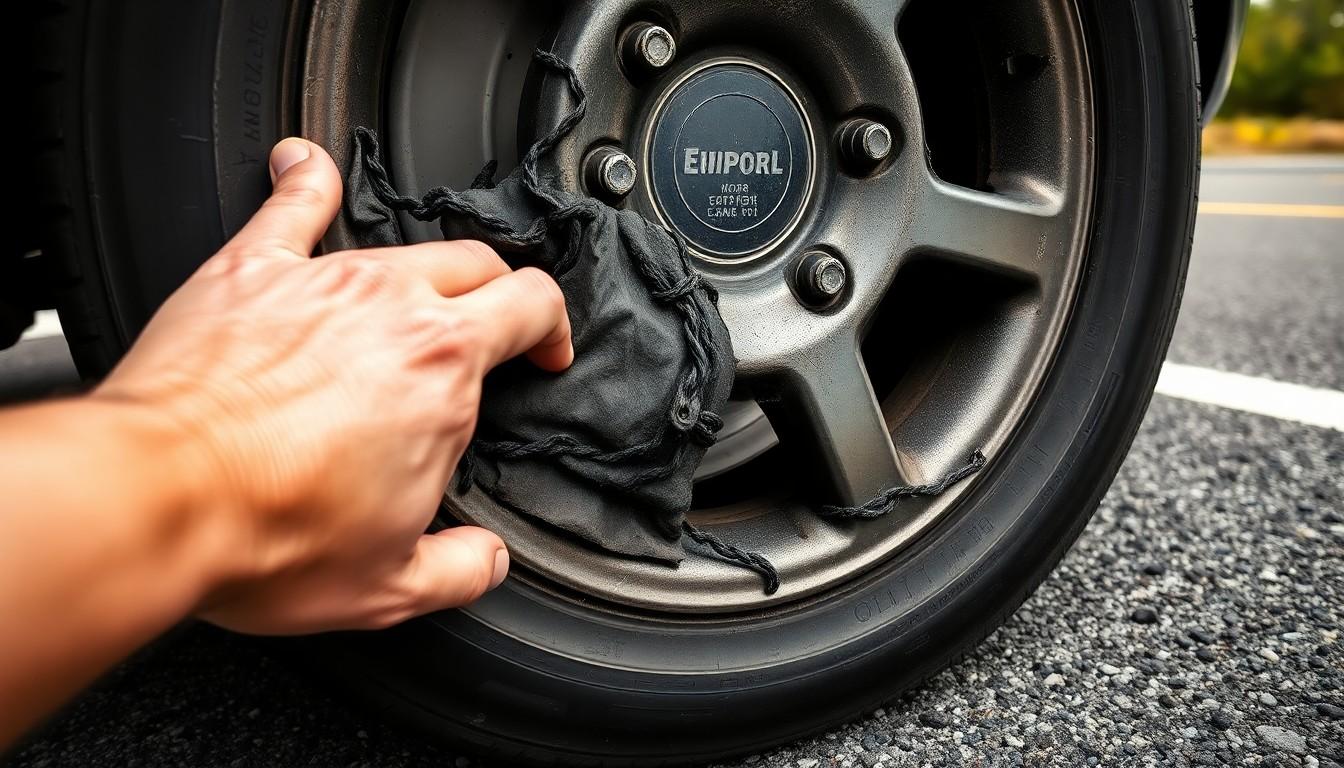
Exposed tire cords require immediate attention to ensure road safety. Any tire showing cord exposure has lost its structural integrity and poses a important risk to drivers and passengers.
Immediate Replacement
Replacing tires with exposed cords should be your top priority. Automotive safety experts emphasize that these compromised tires can lead to sudden blowouts, especially under challenging conditions like aggressive driving or heavy vehicle loads. Contact a reputable tire shop as soon as you notice cord exposure to schedule a replacement.
While arranging for new tires, check for underlying vehicle issues that might have caused premature tire wear. Problems such as wheel misalignment, suspension issues, or chronic underinflation often contribute to uneven tire wear that eventually exposes cords. Addressing these problems prevents similar damage to your new tires and extends their lifespan.
Temporary Answers in Emergency Situations
There are no safe temporary answers for driving on tires with exposed cords. Unlike minor tire damage that might be temporarily patched, exposed cords indicate critical structural failure. Tire safety experts explicitly warn against continuing to drive, even for short distances, when cords are visible.
Emergency roadside assistance represents the safest option if you discover exposed cords while away from home. Towing services, though potentially costly, provide a much safer alternative than risking a catastrophic blowout at speed. Some automotive insurance policies and roadside assistance memberships cover towing expenses in these situations.
When to Replace vs. When to Repair
Tires with exposed cords always require replacement rather than repair. The exposure of metal beads or cords indicates severe deterioration that compromises the tire’s basic safety functions. No repair technique can restore the structural integrity of a tire in this condition.
Repair options exist only for tires with minor punctures in the tread area where the internal structure remains intact. Professional tire technicians assess damage based on exact industry guidelines that prohibit repairs when:
- Damage occurs in the sidewall rather than the tread
- Punctures exceed 6mm (¼ inch) in diameter
- Any internal structural components are visible
- Multiple damage points exist close together
Replacing the compromised tire with a matching one helps maintain proper vehicle handling. Many tire shops recommend replacing tires in pairs (both fronts or both rears) to ensure even traction and handling characteristics.
Cost Comparison: Immediate Replacement vs. Delayed Action
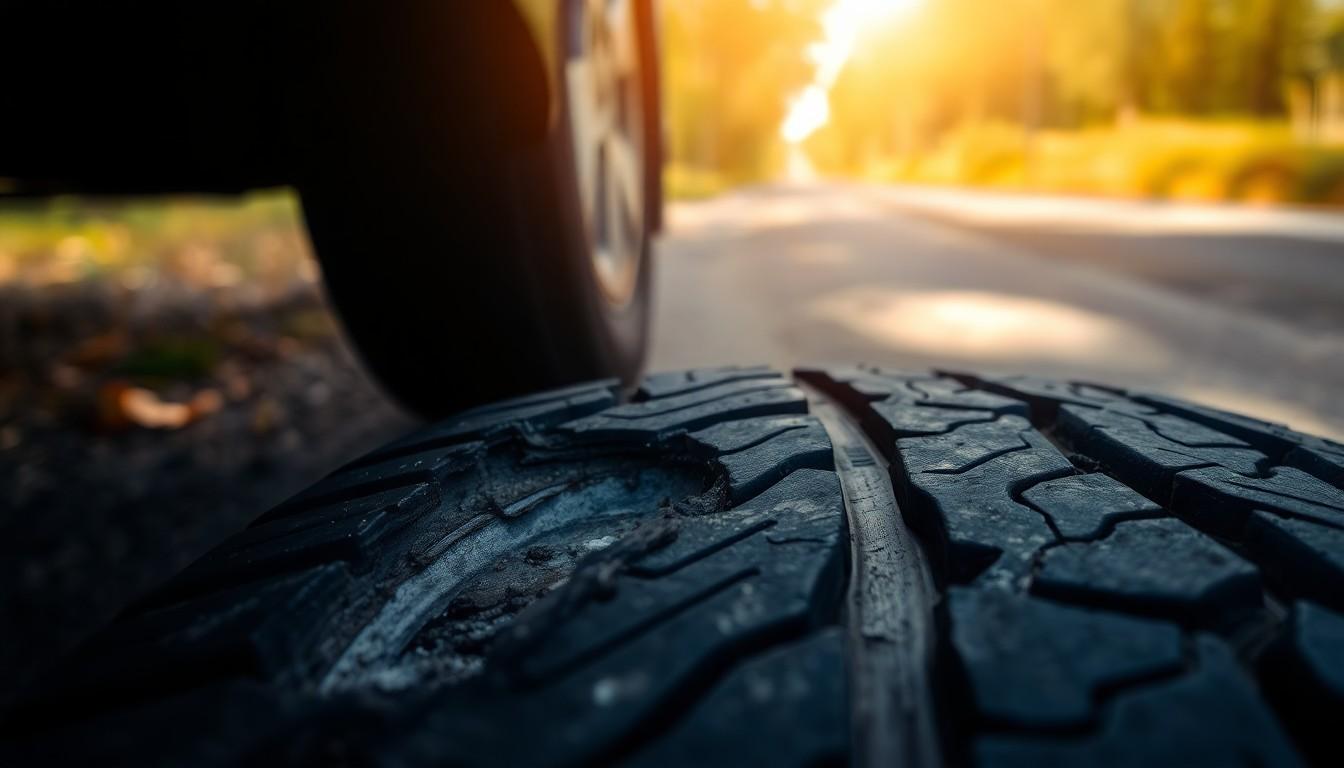
Immediate Replacement
Replacing tires with exposed cords immediately involves upfront costs ranging from $50 to $200 per tire, depending on the quality and type you select. Prompt action prevents potentially catastrophic tire failures that could lead to accidents or vehicle damage. Many drivers find that immediate replacement offers peace of mind by eliminating the stress of driving on compromised tires. Safety benefits far outweigh the initial expense when considering that exposed cords indicate complete structural failure of the tire.
Delayed Action
Postponing tire replacement might seem economical at first peek, but it creates important financial risks in the long run. Emergency towing services alone can cost $75-150 if you experience a blowout far from home. Vehicle repairs resulting from accidents caused by tire failure often exceed $1,000, not including potential medical expenses. Insurance companies frequently deny claims related to accidents involving visibly damaged tires, classifying these as negligent maintenance. The convenience factor also disappears quickly when you’re stranded on the roadside waiting for assistance.
The total cost of delaying tire replacement typically exceeds immediate replacement costs by 3-5 times when accounting for emergency services, vehicle repairs, and lost time. Beyond financial considerations, the safety risks of driving on tires with exposed cords create potential life-altering consequences that no budget calculation can adequately measure. Each mile driven on compromised tires increases the probability of sudden tire failure, particularly during highway driving or adverse weather conditions.
Conclusion
Driving on tires with exposed cords isn’t just risky—it’s potentially deadly. There’s no safe timeframe for using these compromised tires as they’ve already failed structurally and are hours away from catastrophic blowout.
The choice is clear: replace exposed-cord tires immediately. The $50-$200 per tire cost pales in comparison to potential accident expenses totaling thousands of dollars not to mention the incalculable cost of risking lives.
Remember that proper tire maintenance and regular inspections help catch problems before cords become exposed. We can’t emphasize enough that when it comes to tire safety there’s no compromise—exposed cords mean it’s time for new tires today not tomorrow.
Frequently Asked Questions
Is it safe to drive on a tire with exposed cords?
No, it is never safe to drive on a tire with exposed cords. Once the internal structure is visible, the tire has lost its structural integrity and is at high risk of catastrophic failure. Driving on such tires is extremely dangerous and potentially life-threatening for you and others on the road. Automotive safety experts strongly advise replacing the tire immediately.
How do I identify exposed tire cords?
Look for visible white or gray strands showing through the rubber tread or sidewall. Other warning signs include extremely low tread depth (below 2/32 inch), cracks in the sidewall, bulges, or unusually brittle rubber. You may also notice unusual vibrations while driving, reduced grip (especially on wet surfaces), or longer stopping distances. Regular tire inspections help catch these issues early.
What causes tire cords to become exposed?
Tire cords become exposed through natural wear and tear when tires reach the end of their usable life, physical damage from road hazards like potholes or debris, vehicle suspension issues that create uneven tire wear, and improper maintenance such as incorrect inflation pressure. Regular tire rotation and proper inflation can help prevent premature cord exposure.
How long can I drive on a tire with exposed cords?
You shouldn’t drive at all on a tire with exposed cords. Once cords are visible, the tire has reached the end of its usable life and could fail at any moment. At highway speeds, failure could occur within hours or even minutes. Wet roads and underlying vehicle issues further accelerate failure. The risk is simply not worth taking.
What should I do if I notice exposed tire cords?
Replace the tire immediately. Contact a reputable tire shop for replacement options and avoid driving the vehicle if possible. If you must move the vehicle, drive very slowly to the nearest tire shop or call for roadside assistance. Also check for vehicle alignment or suspension issues that may have caused premature wear to prevent the same problem with new tires.
Can a tire with exposed cords be repaired?
No, a tire with exposed cords cannot be repaired. Once the internal structure is compromised to this extent, no patch or plug can restore its structural integrity. Replacement is the only safe option. Attempting to repair such a tire is dangerous and no reputable tire shop would perform such a repair due to safety and liability concerns.
Are there legal consequences for driving on tires with exposed cords?
Yes, driving with exposed tire cords can result in traffic citations in most jurisdictions since it violates minimum safety requirements for vehicles on public roads. More seriously, if you cause an accident while driving on visibly unsafe tires, you could face liability for negligence. Insurance companies may also deny claims for accidents caused by obviously negligent tire maintenance.
Is it more expensive to replace a tire immediately or wait?
Replacing a tire immediately is significantly more cost-effective. While immediate replacement costs $50-$200 per tire, delaying can lead to expenses 3-5 times higher due to potential accident damage, emergency towing, vehicle repairs, increased insurance premiums, and possible medical bills. The financial risk of waiting far outweighs the cost of prompt replacement.

